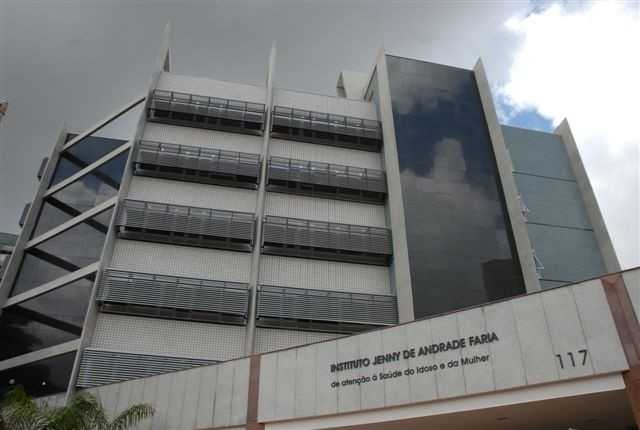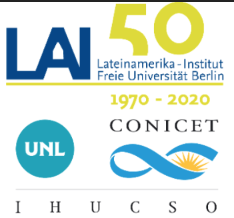June/2014
Marcos Cueto * | História, Ciências, Saúde – Manguinhos Blog

Professor Rory Miller
Rory Miller is an economic historian and reader in International Business at the University of Liverpool Management School in the United Kingdom, and one of the joint editors of Journal of Latin American Studies. In 1997, together with Rogan Taylor, he began the one-year MBA (Football Industries) programme at Liverpool, which now has a network of over 400 graduates working in sport across the world. He co-edited Football in the Americas: fútbol, futebol, soccer (London: Institute for the Study of the America, 2007), and contributed a chapter in the book edited by Martín Monsalve, El fútbol como negocio: una introducción a la genstión (Lima: Universidad del Pacífico, 2012)
What economic expectations do middle-income countries, such as Brazil, usually have in hosting World Cups?
Economists agree that the economic benefits of hosting a sporting mega-event are normally seriously overestimated by those with a vested interest in promoting it, whether the business consultants who undertake the feasibility studies or politicians and national football associations that want to convince their citizens that it’s ‘a good thing’.
Careful cost-benefit analysis after the event shows that few countries derive value from hosting large sporting events like the World Cup. Actually, winning the bid is costly in terms of time and money; the host association gains little in comparison with FIFA; and in many cases the new stadiums constructed to fulfil FIFA’s requirements will never be properly used afterwards.
Stefan Szymanski, a leading sports economist at University of Michigan, compares it to hosting a big party, and notes that very few people get rich from hosting parties. Indeed, one might add, the hosts usually have to spend quite a bit on preparations, deal with the drunks, mediate in nasty conflicts, and clean up the mess.
Thus one has to look for benefits in other, more intangible ways: the event may give a long-term boost to the country’s and the host cities’ image, attracting new investment; the improved transport infrastructure may benefit the public afterwards, though in poor localities ordinary people often see little gain. Apart from the impact on a country’s ‘brand’ and image, it may also make its population feel more positive for a while, especially if the host country wins. Britain’s gold medals in the London Olympics of 2012 did create a real ‘feel good’ factor which lasted for a few months.
But did the Olympic Games do anything for Britain’s economy? That’s very doubtful. Indeed, they meant extra public investment in London at the cost of everyone else in the country, and that’s a problem that is often repeated elsewhere. Rich First-World countries, which already have good football facilities that they can upgrade may be able to afford to host an event like the World Cup; poorer countries which have to start from scratch cannot, but their politicians and football officials probably don’t care if they can enjoy a month on the world stage.
What have been the main financial interests and institutions behind the most recent World Cups?

Rory Miller contributed a chapter in the book “El fútbol como negocio: una introducción a la gestión deportiva en Europa y Brasil” (Universidad del Pacífico, Lima, 2012)
There is a huge range of business interests, from consultancies like KPMG or Deloitte to gambling companies, and it may be easiest to visualise them as a series of concentric circles with FIFA at the core.
First, then, we need to consider FIFA, its six main commercial partners and the media companies to whom it sells the rights to broadcast the competition. From the 2010 World Cup FIFA earned approximately US$ 3,7 billion, of which around US$ 2,4 billion came from the sale of media rights and just over one billion from marketing. For FIFA this income is vital for its next four years’ operations as it organises very few other competitions that make money. The income from the World Cup has to finance the FIFA secretariat in Zurich with all its offices to deal with issues like refereeing, player registrations, and so on; and its international programme to develop the sport throughout the world.
The six headline commercial partners – currently Visa, Hyundai, Coca-Cola, Adidas, Sony, and Emirates – as well as those in the second tier of sponsorship like Budweiser and McDonald’s, aim to ‘activate’ their sponsorship to derive maximum commercial benefit. At the same time, the broadcasters seek profits from subscriptions and advertising revenues.
There are many other interests that receive indirect benefits from the World Cup, but do not pay anything to FIFA for the privilege. Players will often have their transfer values, salaries and bonuses enhanced by a ‘good’ World Cup. For many footballers from less well-known countries, good performances in the World Cup finals may open up the possibilities of a lucrative transfer to one of the top European leagues. Players who do well will also benefit from their contracts with boot manufacturers and from the value of their personal image rights.
Firms like Nike and Puma, even though they have paid large sums to supply the kits of the 32 finalists, will profit enormously from the sale of replica shirts and other merchandise of the competing nations: sales of replica shirts apparently exceeded 30 million in 2010, and it will probably be higher in 2014. These companies will aim to build strong marketing campaigns around the teams and players that they sponsor (trying to outflank Adidas, who are the official partners of FIFA).
Other firms which, like Nike, are not official partners of FIFA will put a lot of effort into imaginative advertising to take advantage of the event. You might remember the attractive young women wearing outfits advertising Bavaria beer at the match between the Netherlands and Denmark in South Africa in 2010, or Niklas Bendtner’s goal-scoring celebration advertising a gambling company in the 2012 European Championships. In 2014 we can certainly expect to see many more interesting viral ads and other attempts at ‘ambush marketing’.
Finally, thousands of companies, ranging from consultancies and construction firms, to hotel chains, and travel agencies benefit from the event itself. However, there is considerable evidence that a large sporting event displaces ordinary tourist activity, so the long-term benefit would probably have to come through the public investment in areas like transport that improve life for ordinary citizens. In terms of other business interests that profit from the event, we should also include the gambling, Internet providers, and software companies, which have been real growth areas in the football business during the last ten years.
How did FIFA achieve the economic power that it has today?
The real economic power of FIFA dates back to 1974 when the Brazilian, João Havelange, replaced a traditional Englishman, Sir Stanley Rous, as president by gathering votes from newly independent nations in Asia and Africa, as well as from CONMEBOL countries.
This shift of power coincided with the development of modern methods of marketing and sponsorship, as well as the wide distribution of colour television and the use of satellite communications to transmit matches live across the world. The 1970 World Cup in Mexico was the first that most football fans across the world could watch live in colour, and interest was of course helped by the success of the ‘Beautiful Team’ of Pelé, Gerson, Jairzinho and Rivelino.
It’s interesting to compare pictures of the Estadio Azteca in the 1970 and 1986 finals to see the commercial difference. In 1970 the pitch-side advertising is cluttered, amateur, and lacking in ‘big names’; in 1986 global brands like Camel, Canon, Seiko, Fuji, Philips and Gillette are visible behind the pictures of Maradona. The latter year also roughly coincides with the point when individual clubs signed their first shirt sponsorships with global consumer brands.
The Internet, of course, has intensified the revolution begun by the advent first of colour TV, and then of cable and satellite platforms for broadcasting. Without media interest and a global audience there would be nothing like the value that there is in sponsorship, whether we are talking about the World Cup or the European Championships, the UEFA Champions’ League or the Copa Libertadores, or internationally known clubs like Boca Juniors, Corinthians, Barcelona, and Arsenal.
Football is almost unique in its strong appeal to young men aged between 15 and 35, from any country or social class, and hence advertisers have to pay large sums for space on television during football matches to reach this target audience. In the case of the World Cup, the value of TV advertising slots is further enhanced by its appeal to many, including women, who would not normally watch a football match on television.
* Scientific Editor, História, Ciências, Saúde – Manguinhos Journal
This interview in portuguese:
Uma megafesta com legado superestimado
Poucos países conseguem efeitos positivos duradouros sediando grandes eventos, afirma o professor Rory Miller, fundador do MBA A Indústria do Futebol da Universidade de Liverpool
Related links (in portuguese)
História, Ciências, Saúde – Manguinhos Blog:
‘A Copa é o melhor momento de expressar o inconformismo com as nossas insatisfações’
Para o jogador e médico Afonsinho, o Brasil não está aproveitando uma oportunidade extraordinária
‘Uma Copa não tem a força necessária para mudar um país’
Para o antropólogo alemão Martin Curi, os brasileiros alimentaram esperança demais, e o legado possível restringe-se à venda de uma imagem positiva do Brasil
‘O x da questão não está na reação do jogador, mas no teor da campanha’
Para Clícea Maria Miranda, associação do negro com animalização e a irracionalidade está cristalizada.
Macacos não jogam futebol
Ricardo Waizbort inocenta Darwin de acusações de racismo e explica que ele defendia que todas as “raças” humanas faziam parte de uma mesma espécie e compartilhavam um ancestral comum: um primata.
História, Ciências, Saúde – Manguinhos Journal:
Formação de relações regionais em um contexto global: a rivalidade futebolística entre Rio de Janeiro e São Paulo durante a Primeira República – Artigo de Christina Peters (vol. 21, n.1, jan.-mar. 2014)
Read also:
Qual será o legado deixado pela Copa? – O preço que se paga por sediar o megaevento foi tema da reportagem de capa da Revista Radis de junho. Legado também é tema do Blog Saúde em Pauta.
Arquivo Nacional em ritmo de Copa
Exposição virtual Drama e Euforia: o Brasil nas Copas de 50 a 70 traz fotos do Correio da Manhã e da Agência Nacional
Professores do CPDOC publicam em Londres livro sobre relações entre o Brasil e o futebol
Paulo Fontes e Bernardo Buarque de Hollanda lançam em Londres The Country of Football: Politics, Popular Culture, and the Beautiful Game in Brazil.
‘O Maraca é nosso’?
Bernardo Buarque de Hollanda e Jimmy Medeiros apresentam os resultados de uma pesquisa sobre a percepção das torcidas do Rio do novo Maracanã. Exemplo: quanto mais velho o torcedor, mais ele aprova o estádio remodelado.
How to cite this post [ISO 690/2010]:
A mega event with an overrated legacy. Blog de História, Ciências, Saúde – Manguinhos. [viewed 27 June 2014]. Available from: http://www.revistahcsm.coc.fiocruz.br/a-mega-event-with-an-overrated-legacy/









